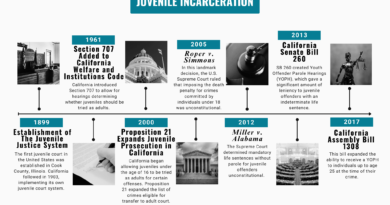Felon’s Alphabet: ‘D’ is for defects of character

From presidents and populace, to wardens and wards, we all have defects of character. So, the question today is: When push comes to shove and shove goes to punch and if, God forbid, punch goes to stab, what are you made of? When our mettle is tested, will we succeed or succumb to our own defects of character?
“D” is for defects of character. Webster’s Dictionary defines a defect as “an imperfection that impairs worth or utility, a shortcoming, or an inadequacy.”
Floating around Central California Women’s Facility is a list. You know you’ve seen it, the infamous defects of character list, beginning with “Abusing others for enjoyment,” and ending with “Wasteful.” The list is 194 defects long —194 ways to potentially screw up.
While there are some very obviously undesirable character defects on this list, there are also many that don’t register as all that bad at first glance. For example, did you know that complaining was a character defect? I didn’t. I do now though. So, for all you complainers out there — beware.
Let’s look at an example. What about the inability to set boundaries? How did that make the cut? On the surface, an inability to set boundaries may not seem like much of a character defect until you look a little closer and deeper into what that could entail. Imagine not being willing or able to just say, “No.” Now imagine not saying “No” to the illegal demands of antisocial peers and how that could result in running afoul of the law. Anybody know anyone who’s gotten “caught up” like that? I sure do; there are many.
Whether or not a defect of character is discernable at first glance, what is disconcertingly clear is that inaction or a denial of our defects may lead people to places like the one we live in. Our defects of character are the proverbial chinks in our chains, the areas where we are “defective” that require exploration, attention, and definitely, tending to.
It all seems so deceptively simple and yet, this journey of self-discovery could rightfully be compared to one of the 12 tasks of Hercules. One needs to wade through the mire of formative years, the dysfunction, the distant parental figures, the authoritative bosses, and the unhealthy romantic entanglements to find the root cause of each character defect. This is necessary in order to order to comprehensively articulate them in all the ways they pertain to our life crimes. It’s all in an effort not to reoffend and to emerge from prison as the 2.0 versions of ourselves.
In a nutshell, the Board of Parole Hearing requires incarcerated individuals to have a firm grasp on not only what one’s character defects are, but also on how these character defects came about, and ultimately what has been done to mitigate, if not prevent, them from reoccurring. Again, so as not to reoffend.
I encourage you to dissect each defect of character you have. Really dig deep, figure out its source, analyze how it manifests itself in your life, and process any secondary gains that may have resulted from maladaptive behaviors. It’s hard work, but it’s rewarding. Be aware that eradicating defects of character is an impossible undertaking — the best that can be done is to identify what our defects are, ascertain how and to what degree they impact our lives and then learn how to manage them.



